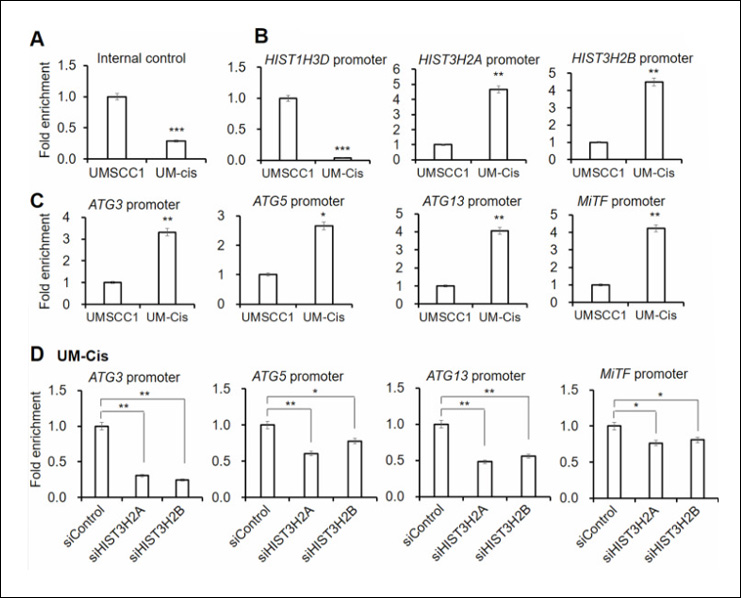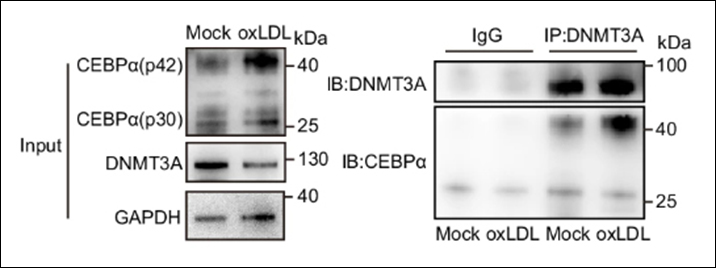Zhang X et. al. (November 2024). RNA m6A methylation regulatory mechanism of resveratrol in premature senescence cells Zhang X et. al. (November 2024).
This study investigates the role of RNA m6A methylation in the anti-senescence effects of resveratrol, a compound with known antioxidant and anti-aging properties. Using a premature senescence model of human embryonic lung fibroblasts induced by oxidative stress (H2O2), resveratrol delayed senescence by improving cell viability, reducing oxidative stress, and modulating key genes (CCND2, E2F1, GADD45B). It increased overall m6A methylation levels, revealing potential mechanisms for its anti-aging effects.
Products Used: EpiQuik m6A RNA Methylation Quantification Kit (Colorimetric), Epigenase m6A Methylase Activity/Inhibition Assay Kit (Colorimetric)
Pérez-Pérez Y et. al. (November 2024). Increase of histone acetylation by suberoylanilide hydroxamic acid enhances microspore reprogramming and expression of somatic embryogenesis transcription factors in Brassica napus Plant Sci. 351:112318.
This study explores histone acetylation's role in microspore embryogenesis in Brassica napus. Stress-induced microspore reprogramming increased histone acetylation, histone acetyltransferase activity, and expression of embryogenesis-related genes. Treatment with the histone deacetylase inhibitor SAHA further enhanced embryogenesis initiation and transcription of key embryogenesis factors. These findings reveal histone acetylation as a critical regulator of somatic embryogenesis and suggest potential applications of epigenetic modifiers in crop improvement.
Products Used: EpiQuik HAT Activity/Inhibition Assay Kit, EpiQuik Global Histone H4 Acetylation Assay Kit
Sağlam B et. al. (November 2024). An Investigation of RNA Methylations with Biophysical Approaches in a Cervical Cancer Cell Model Cells. 13(22)
This study explores biophysical methods for analyzing RNA methylation in cervical cancer models. Using FT-IR and CD spectroscopy, researchers distinguished methylated RNA from unmethylated RNA and assessed methylation changes following METTL3 knockdown or TNF-α treatment in HeLa cells. The findings highlight distinct RNA structural changes induced by m6A and m1A methylation, demonstrating the potential of these techniques as cost-effective alternatives for RNA methylation analysis.
Products Used: EpiQuik m6A RNA Methylation Quantification Kit (Colorimetric)
Chen R et. al. (November 2024). METTL3 and IGF2BP2 coordinately regulate FOSL1 mRNA via m6A modification, suppressing trophoblast invasion and contributing to fetal growth restriction FASEB J. 38(22):e70154.
This study identifies the role of m6A modification in fetal growth restriction (FGR). Elevated METTL3 levels in FGR placentae increase m6A modification of FOSL1 mRNA, enhancing its expression through IGF2BP2 and suppressing trophoblast invasion, migration, and proliferation. The METTL3 inhibitor STM2457 effectively restores fetal and placental weights in FGR mouse models and regulates trophoblast behavior in vitro, highlighting METTL3 as a potential therapeutic target for FGR.
Products Used: EpiQuik m6A RNA Methylation Quantification Kit (Colorimetric), EpiQuik CUT&RUN m6A RNA Enrichment (MeRIP) Kit
Chatterjee D et. al. (November 2024). Maize unstable factor for orange1 encodes a nuclear protein that affects redox accumulation during kernel development Plant Cell.
This study reveals the role of Zmufo1, a nuclear protein, in maize kernel development. Mutations in Zmufo1 disrupt the basal endosperm transfer layer (BETL), causing oxidative stress, DNA damage, and cell death. Antioxidant treatments mitigated these defects. Transcriptome and biochemical analyses indicate Zmufo1 regulates redox homeostasis, histone acetylation, and BETL-related genes. Additionally, Zmufo1 interacts with chromatin remodeling and transcriptional proteins, highlighting its critical role in kernel nutrient transport and development.
Products Used: EpiQuik 8-OHdG DNA Damage Quantification Direct Kit (Colorimetric)
Jin J et. al. (November 2024). Human HDAC6 senses valine abundancy to regulate DNA damage Nature.
This study identifies human HDAC6 as a valine sensor that regulates DNA damage through intracellular valine levels. HDAC6 binds valine via a primate-specific SE14 domain, and its nuclear-cytoplasmic shuttling depends on valine availability. Valine deprivation causes HDAC6 to accumulate in the nucleus, leading to TET2 deacetylation, active DNA demethylation, and DNA damage. Dietary valine restriction reduces tumor growth and enhances the efficacy of PARP inhibitors in cancer models, presenting a potential therapeutic strategy for cancer treatment.
Products Used: Epigenase HDAC Activity/Inhibition Direct Assay Kit (Colorimetric)
Alcover-Sanchez B et. al. (November 2024). R-Ras1 and R-Ras2 regulate mature oligodendrocyte subpopulations Glia.
This study investigates how the small GTPases R-Ras1 and R-Ras2 influence the heterogeneity of mature oligodendrocyte (MOL) subpopulations, essential for myelination in the central nervous system. In mutant mice lacking R-Ras1 and/or R-Ras2, an increase in the MOL1 subpopulation and a decrease in MOL2 and MOL5/6 subpopulations were observed. These findings identify R-Ras1 and R-Ras2 as crucial regulators of MOL subpopulation balance and provide insights into myelination processes. Understanding these mechanisms could advance regenerative therapies for myelin-related disorders such as multiple sclerosis and leukodystrophies.
Products Used: KLK6 Polyclonal Antibody




 Cart (0)
Cart (0)













